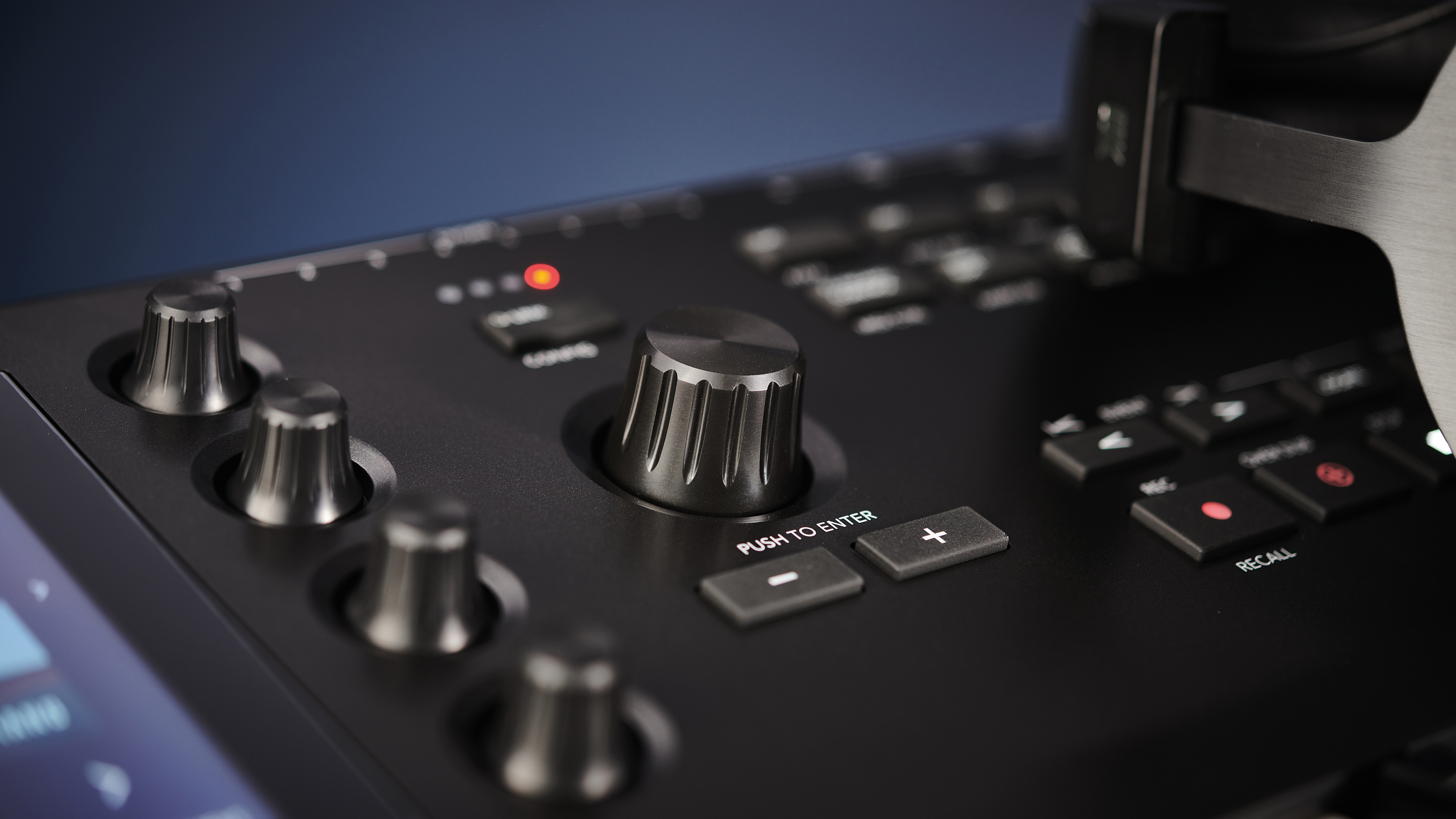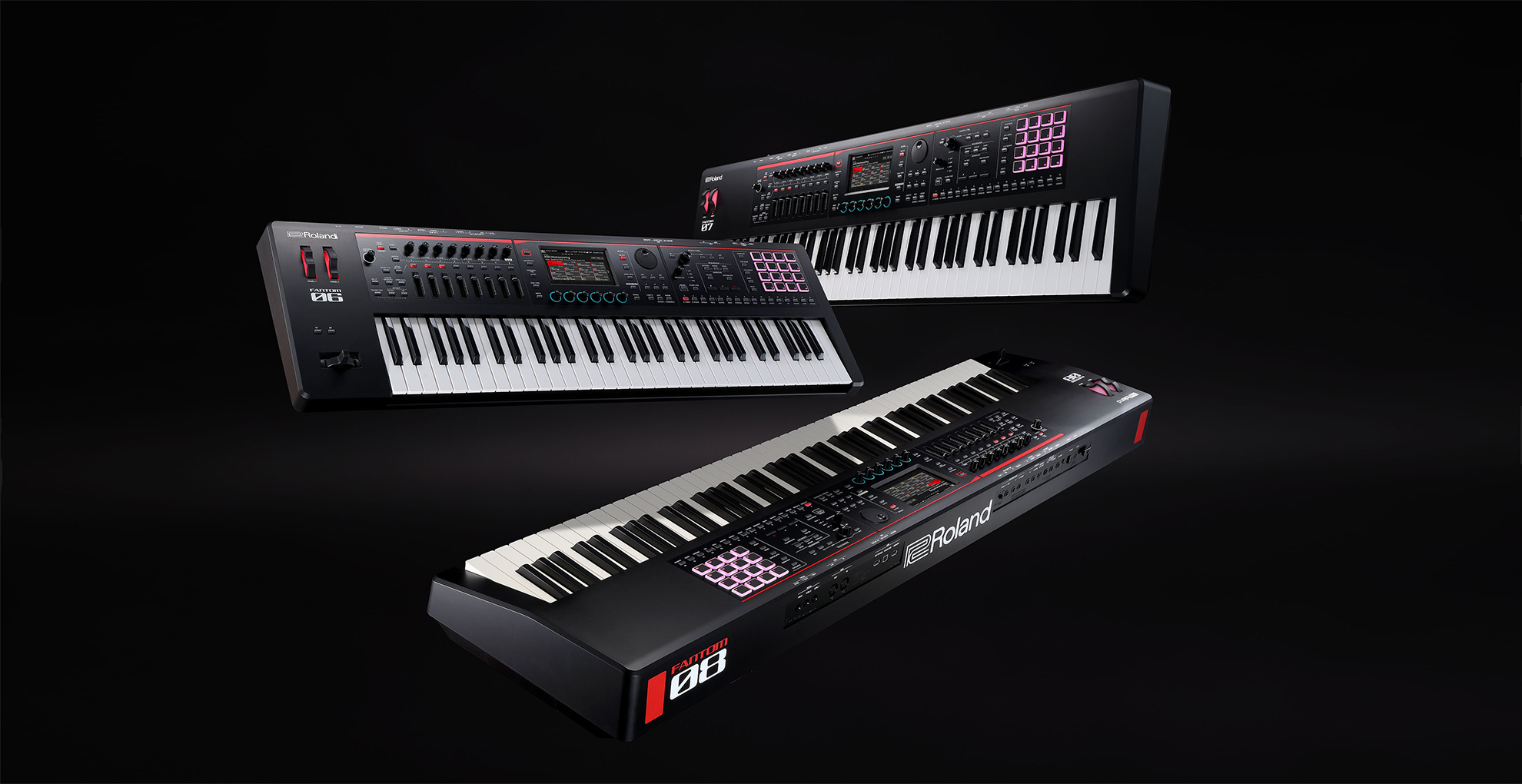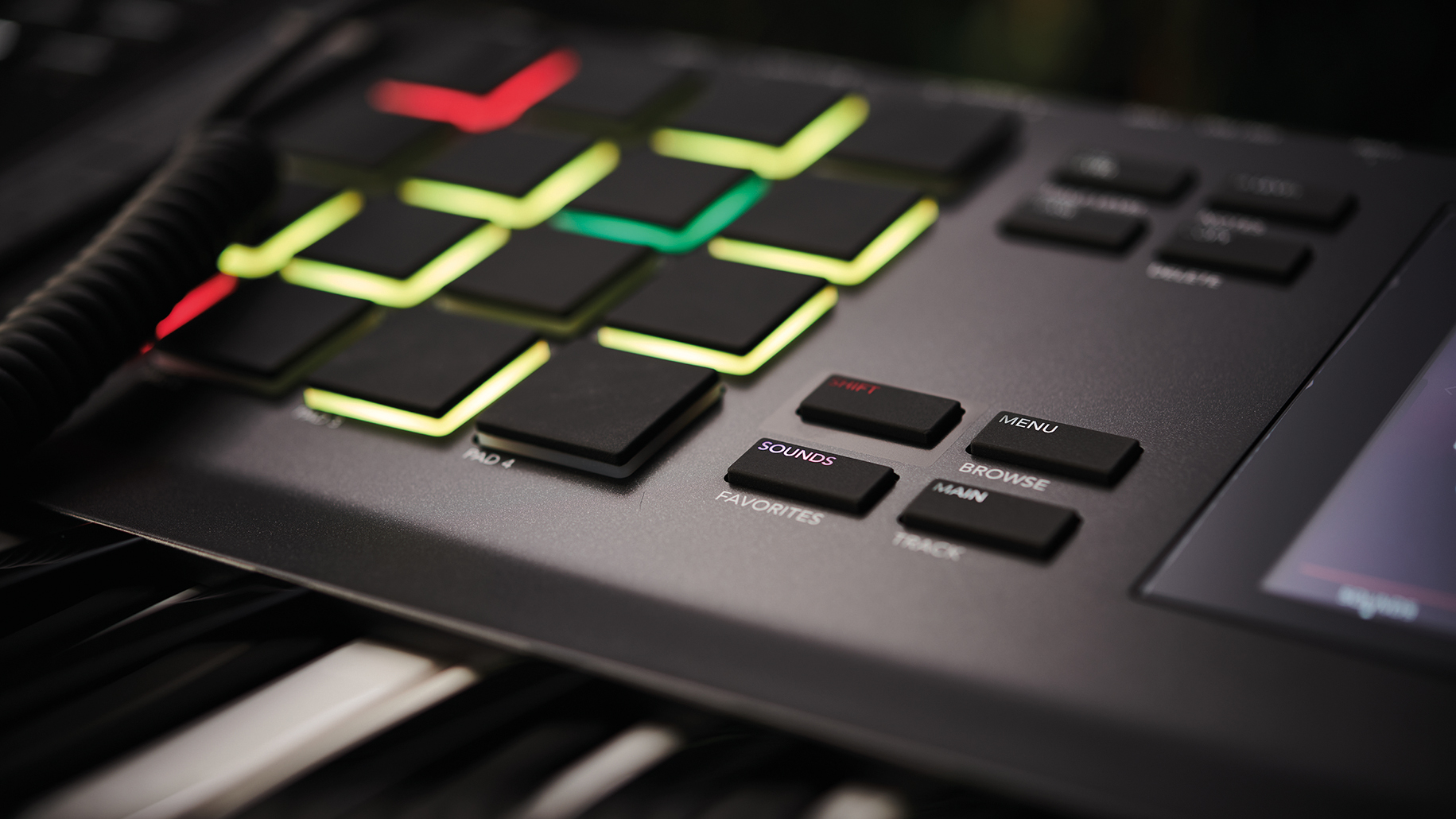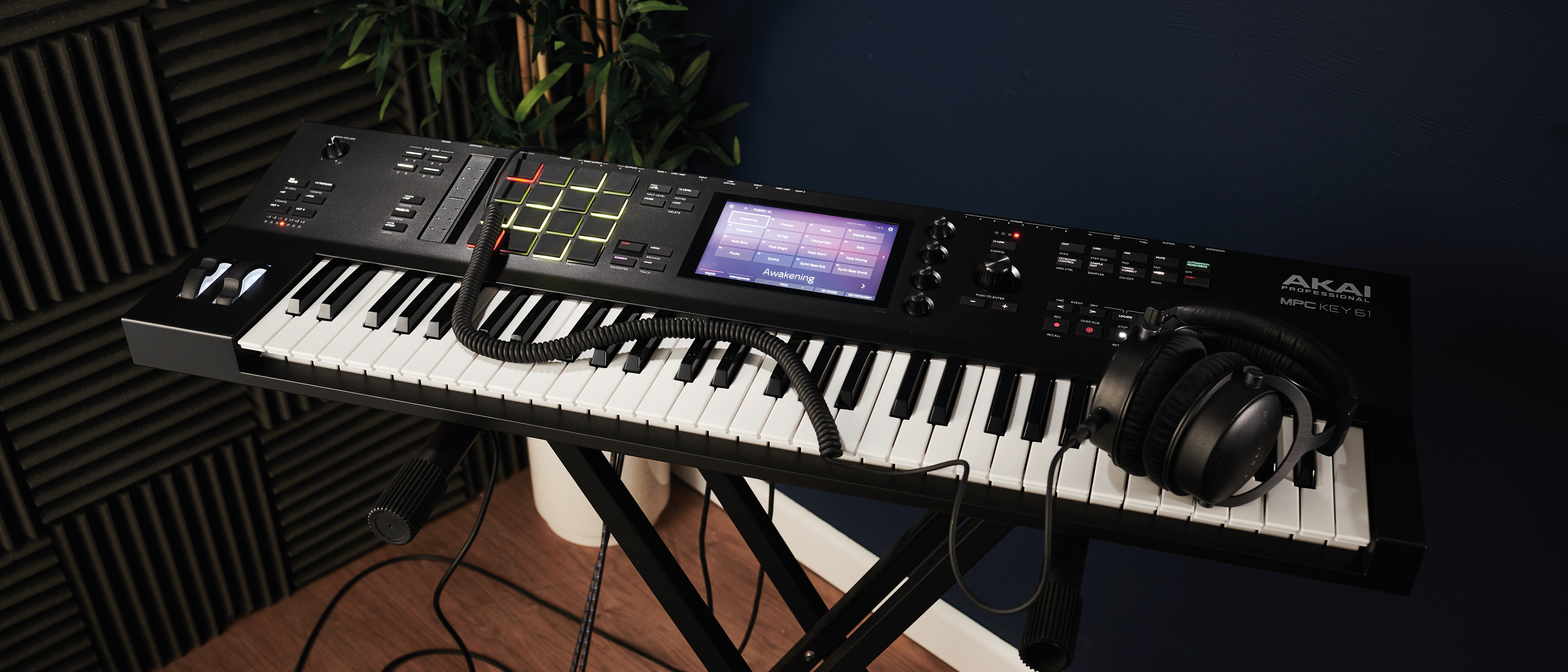MusicRadar Verdict
A logical progression for the MPC series – a missing link for many users craving a keyboard. Powerful, easy to use, and sounds excellent
Pros
- +
Excellent suite of onboard instruments.
- +
Full integration with Akai MPC 2 DAW/plug-in software.
- +
Excellent connectivity.
Cons
- -
Kind of bulky if you’re not used to workstations.
- -
Needs a few more physical controls.
- -
Demo projects have limited variety.
MusicRadar's got your back
Akai MPC Key 61: What is it?
Akai released its MPC Live hardware sampler/synth back in 2017 – complete with 7” touch display, 16 MPC-style pads, instruments, and battery power, and in 2020, the MPC Live II added onboard speakers.
The MPC range – the Live I and II, MPC X, MPC Studio, MPC Touch, and MPC One, interacts with Akai’s MPC 2 production software. Akai has embedded the same software and functionality in different forms, which makes sense from a development point of view – in fact, they share the same manual. Now, 2022 introduces the MPC Key 61.
Like all MPCs, the Key 61 is a sampler using the provided instruments or building custom instruments based on sample key groups. It can play sequenced patterns and complete songs. The keys, pads, and other controls add a tactile element.
The box contains the MPC Key 61, a mains power cable, a USB cable, a printed quick start guide, and software download and registration info.
It’s considerably larger than other MPCs and you’ll need a case or bag. Like any workstation these days, the 7” touch display is at the heart of the user interface. Physical controls include pitch and mod wheels, a touch strip, 16 pads (hey, it’s an MPC), five knobs and an assortment of buttons, including pleasantly chunky transport controls.
The rear panel features, from left to right, expression, foot switch, and sustain pedal inputs, MIDI Thru/Out/In DIN connectors, eight cv/gate outputs for connecting analogue gear, two mic/line inputs with gain controls and 48v switches, four 1/4” outputs, 1/4” headphones out, two USB-2 ports, one USB-3 port, ethernet network connection and mains power button.
The semi-weighted keyboard is equally comfortable for playing synth parts or more traditional piano-style performances, and the pads are the classic reliable MPC style.
Want all the hottest music and gear news, reviews, deals, features and more, direct to your inbox? Sign up here.
The MPC Key 61 includes several new instruments from AIR Music Technology. The Fabric Collection is one instrument that’s been organised into separate plugins to conserve system resources – so it appears as Fabric (with fewer voices), Fabric XL (the full-on flagship version), Fabric Piano, and Fabric Electric Piano.
Fabric is a monster sound source, especially good for modern-sounding productions, with synths, pads, basses, and leads, even guitars. Also new is OPx-4 which narrows the focus somewhat, with a four-operator FM synthesis engine, creating blatantly digital sounds, with a modulation matrix, and built-in effects; we love the sound of FM synthesis, and this is a fine example – and we enjoyed using the touch screen to adjust envelopes.

The remaining new instruments break out of the ‘electronic music’ mould – Stage Piano, Stage EP, Organ, and Studio Strings, which sound great, ranging from solo instruments to full ensembles, with plenty of options for expressive playing.
Strings can be difficult instruments to get sounding ‘natural’ but these ones are outstanding. These are the kind of sounds that’ll make the MPC Key 61 interesting to all types of players.
Also present are the standard MPC instruments and of course, bearing in mind that we’re dealing with an MPC product, there are many sample-based drum expansions, ready to play off those pads.
Keep trying the mod wheel, touch strip, X-Y pad, and Q link knobs as you browse, most presets have some kind of interaction preconfigured.

Akai MPC Key 61: Performance and verdict
We connected a dynamic mic to input 1, and set a level on the physical gain control – there are also separate 48v switches on each input, should you prefer condenser mics (we would’ve liked two more audio inputs, although third-party USB audio and MIDI interfaces can be connected, so you can get up to 32 channels of audio in/out, although you still max out at eight audio tracks per project – we tried this successfully with a Behringer UMC1820 interface).
Audio inputs can go direct to an audio track, for DAW-style recording, or to the Sampler, or to the Looper. Up to four insert effects can be applied to any track of pad. These are categorised by type, for example, Delay/Reverb, Dynamics, and Modulation.
New effects include Flavor (for vinyl-style sound degradation), Limiter, and the Vocal Suite, which includes pitch correction, doubling, and harmony effects – we had a lot of fun with these – gravitating to the blatantly excessive at first, but then settling down and appreciating them as useful processing tools.

There’s also an Amp Sim, and we tried it with electric bass and electric guitar. We have our favourite modelling solutions, but the MPC Key 61 carried it off well, with bass amps going from clean DI style to grungy retro tube amps and cabs, and guitar amps going from squeaky clean to crunchy rock and beyond (although not really much in the way of high gain metal styles).
The MPC Key 61 places the instruments up front, but rest assured, the sampling and beat-making are still there, as with all MPC devices. Samples can be imported, or recorded straight in, as we mentioned earlier.
They can be edited, cropped, and played from the MPC pads, or from the keys, and they can be used to build a keygroup – a playable instrument constructed from layering samples, instruments, and effects together, and saved as a single preset.

Roland Fantom-06
Roland’s hi-spec workstation series includes powerful step LFOs, multimode analogue filter/drive and great sequencing, sampling and effects.
Yamaha Montage 6
The Yamaha Montage doesn’t sample, but otherwise, it’s an impressive synthesis and sequencing workstation.
We are big fans of using keygroups to build a library of unique sounds and they combine well with the provided instrument library for those who are phobic of using ‘factory’ sounds exclusively.
Sequences are the building blocks of MPC arrangements. MIDI notes and automation can be added via recording from the keys or pads, drawn into the grid using the display, or entered with the step sequencer (great for drums in particular), or even the event list editor.
Sequences can be copied, renamed, and edited, then chained together to make an arrangement. They can also be ‘flattened’ into one new song-length MIDI clip that contains everything, which feels a bit more like viewing a DAW timeline.

The MPC allows up to 128 MIDI tracks and eight audio tracks per project. Even if you have a 32-channel USB interface connected, the maximum simultaneous recording is eight tracks. After you’ve created a number of songs, they can be organised together into a setlist, so they’re more accessible during gigs.
Could you do a whole live show? Yes. Could you do a whole album? Yes.
The MPC includes Ableton Link support, allowing wireless sync with compatible hardware devices or software. We had no issues syncing with Ableton Live and Korg Gadget, running together nice and tight. For big gigs where a wireless connection might not be the best choice, the ethernet port can be called into play, as Link works over that as well.
The MPC Key 61 could go its whole life as a standalone instrument, but it includes a licence for the MPC 2 DAW software, available for macOS and Windows. This is essentially a software version of what the MPC does, albeit with the advantages of a larger display, and greater processing resources.

This integration enables the exchange of projects between the hardware and the computer, and even to other MPCs. For users who are already tied to their favourite DAWs, all is not lost because the MPC 2 install also includes a plugin, so it can be accessed within Ableton Live or Logic or other DAWs.
Workstation keyboards used to rule the roost, and there’s still a number out there from the big players – see our sidebar. Akai brings its sampling expertise, the pads, the accessibility and the interface experience from the previous MPC models. It’s probably more user-friendly than its rivals, where their undoubted power is reflected in their complexity, and it’s also much more affordable.
The truth is that with the wealth of onboard content, and the sampling, you could create any type of music with this. Could you do a whole album with the MPC Key 61? Definitely. Could you do a whole live show? Yes. The Akai MPC Key 61 is a do-everything box
MusicRadar verdict: A logical progression for the MPC series – a missing link for many users craving a keyboard. Powerful, easy to use, and sounds excellent.
Akai MPC Key 61: The web says
"The MPC Key isn’t just an MPC with a keyboard, it’s a completely new species of production workstation."
Sound On Sound
"Make no mistake, though, the MPC Key 61 is a proper studio and stage centrepiece, and should be serious competition for Roland’s Fantom and Korg’s Kronos."
MusicTech
"it would make no sense at all to buy an MPC Key if you aren’t going to be using it to sample and sequence stuff. It’s an MPC, after all."
Gearnews
Akai MPC Key 61: Hands-on demos
Akai Pro
Loopop
Darrick Keels
Chimera State
Akai MPC Key 61: Specifications

- 61 semi-weighted keys with aftertouch
- 6 MPC style velocity-sensitive pads
- Wireless connectivity via Bluetooth and WiFi
- 7” colour touch display
- MIDI, CV/Gate, ethernet, and USB I/O
- New software instruments
- Onboard sampling and sequencing capabilities
- Onboard audio effects from Akai and AIR Music Technology
- CONTACT: Akai Pro

Martin Delaney was one of the UK’s first Ableton Certified Trainers. He’s taught Ableton Live (and Logic Pro) to every type of student, ranging from school kids to psychiatric patients to DJs and composers. In 2004 he designed the Kenton Killamix Mini MIDI controller, which has been used by Underworld, Carl Craig, and others. He’s written four books and many magazine reviews, tutorials, and interviews, on the subject of music technology. Martin has his own ambient music project, and plays bass for The Witch Of Brussels.
